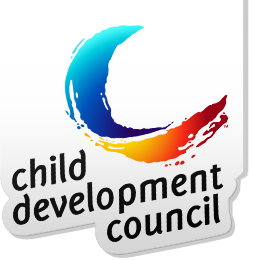| Types of Regulated Child Care in New York State |
|
Tax Overview
Profitable or not, becoming a business owner means being responsible for paying business taxes. Business taxes will impact your personal taxes if you are not on the payroll and there will be somewhat different taxation and filing requirements depending on your business structure. If you are a sole proprietor, or operate a partnership, tax time will look similar to when you are an employee, but there will be additional records about the business that are typically filed on a Schedule C. As a business owner you will have to make contributions to Social Security and Medicare that an employer would have made for you, and you may have to pay part of your annual taxes in the form of estimated taxes throughout the year. Employment taxes can really add up. Every raise you give your employees increases the taxes you owe. Be sure you understand what the impact of increased wages is and that you set money aside to be able to pay them when they’re due. It is always helpful to speak with an accountant when establishing your business and completing your taxes to make sure you understand the requirements and make payment on time.
- How to Find and Choose a Tax Preparer
Learn important principles of finding and choosing a tax preparer in this video by Tom Copeland.
- Understand when required tax payments are due and plan accordingly.
Learn more about tax planning from the Money Smart for Small Business Tax Planning and Reporting for Small Business Participant Guide published by the U.S. Small Business Administration (SBA) and the Federal Deposit Insurance Corporation (FDIC) to learn more about tax obligations and managing accounts.
- Self-Employment Tax
All employees in the United States pay taxes towards Social Security and Medicare. When you are employed, half of this amount is covered by your employer, but when you are self-employed you must pay 100% of these payments so you will still be eligible for Social Security retirement, disability, survivor and Medicare benefits.
- Federal Employment and Payroll Taxes
Income taxes must be withheld from employee wages, based on current tax rates and the withholding allowance noted on the employee’s W-4. Even though returns have to be filed annually, income taxes are paid throughout the year, as the income is earned. The employee portion is deducted from each paycheck and the business will typically pay to the Internal Revenue Service funds deducted from paychecks. Any additional tax or amount due to be refunded will be settled at the end of the year when taxes are filed.
- Estimated Taxes
As stated earlier, you may have to make a quarterly payment towards your taxes. A good rule of thumb is that you probably have to pay estimated tax if you owed money for taxes in the prior year, but it is always best to check with your tax accountant and payroll company to learn what types of payments to anticipate and when they will be due.
- Federal Unemployment Tax
To obtain more information about federal unemployment tax requirements, see Publication 940, “Employer’s Annual Federal Unemployment Tax Return.”
- Social Security and Medicare Taxes
Both employers and employees bear the cost of Social Security and Medicare taxes. Sole proprietors and partners who earn $400 or more pay for Social Security and Medicare taxes that are reported in their federal income tax return. Learn more about federal tax withholding, Social Security taxes, federal unemployment tax and avoiding penalties by filing returns properly from Publication 15, (Circular E), Employer’s Tax Guide.
- Employer Requirements and Rights
To learn about employer rights, responsibilities and filing requirements, download a copy of the New York State Department of Taxation and Finance Publication NYS-50, Employer’s Guide to Unemployment Insurance, Wage Reporting and Withholding Tax.
- Employee Benefits
In addition to employment taxes, employers must pay in for employee “benefits” including worker’s compensation, disability and New York State paid family leave benefits. These benefits help to cover costs including lost wages due to work-related injury or illness and to compensate for family leave. Learn more about insurance options and rates from the New York State Insurance Fund (NYSIF). To learn more about paid family leave specifically, review the Paid Family Leave: Information for Employers publication by New York State.
- Unemployment Insurance
To obtain information on your unemployment insurance requirements, see Publication NYS-50, “Employer’s Guide to Unemployment Insurance, Wage Reporting and Withholding Tax.” Register with the New York State Department of Labor by completing and submitting Form NYS-100, “New York State Employer Registration for Unemployment Insurance, Withholding, and Wage Reporting.”
|

